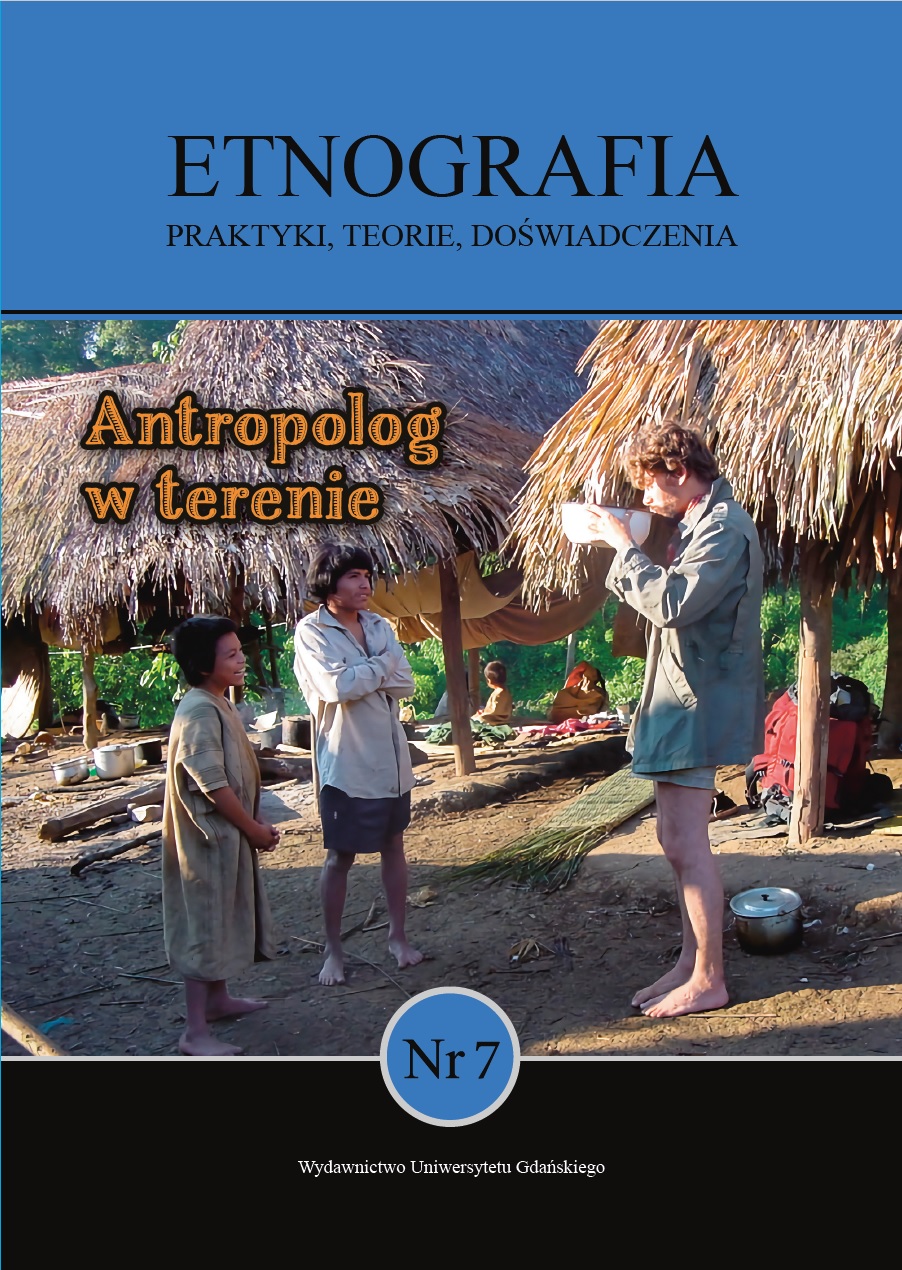Strefa kontaktu, czyli interaktywne relacje antropologa w terenie
DOI:
https://doi.org/10.26881/etno.2021.7.11Słowa kluczowe:
anthropological field research, contact zone, space factor, time factor, intensive habitation, interpreter, Daba, BerbersAbstrakt
Based on the classic concept developed by M.L. Pratt and the author’s experience of fieldwork in Africa, this article discusses methods of building a contact zone during anthropological field research. Under the conditions of such research, a limited space of mutual, lasting, interactive relations is created between the anthropologist and the local social environment. The contact zone understood in this way is produced discursively and practiced physically. The time factor and coordination of the anthropologist’s availa- bility with the rhythm of life in the studied community are paramount. The contact zone may have different scope and social depth – it will be shallow, scattered and short-lived in field research covering an extensive area, but will acquire an interactive depth during an “intensive habitation”, when an anthropologist shares everyday life with the studied community.
Downloads
Bibliografia
Balandier, G.G. (1951). La situation coloniale. Approchethéorique. Cahiers Internationaux de Sociologie”, 11, 44–79.
Brah, A. (1996). Cartographies of Diaspora: Contesting Identities. London: Routledge.
Clifford, J. (2004). Praktyki przestrzenne: badania terenowe, podróże i praktyki dyscyplinujące w antropologii. W: M. Kempny, E. Nowicka (red.), Badanie kultury. Elementy teorii antropologicznej. Kontynuacje (s. 139–179). Warszawa: Wydawnictwo Naukowe PWN.
Copains, J. (1998). L’enquête technologique de terrain. Paris: Nathan.
Geertz, C. (2003). Opis gęsty – w stronę interpretatywnej teorii kultury. Przeł. S. Sikora. W: M. Kempny, E. Nowicka (red.), Badanie kultury. Elementy teorii antropologicznej. Kon- tynuacje (s. 35–38). Warszawa: Wydawnictwo Naukowe PWN.
Hörmann, R., Mackenthun, G. (ed.) (2010). Human Bondage in the Cultural Contact Zone. Transdisciplinary Perspective. Transdisciplinary Perspectives on Slavery and Its Discourses. New York-Münster: Waxmann.
Kilani, M. (1987). L’anthropologie de terrain et le terrain de l’anthropologie. Observation, description et textualisation en anthropologie. Réseaux, 5, 27, Questions de méthode. 39–78.
Matheiu, M.L. (2002). Donnant-Donant. Strategie d’ ateurs villageois aux conditionnalities des projets de developpement Mali. Thèse réalisée en vue de l’obtention du grade de docteur en anthropologie sociale et etnologie. Marseille: Ecole des Hautes Etudes en Sciences Sociales.
Malinowski, B. (1981). Argonauci Zachodniego Pacyfiku, Relacje o poczynaniach i przygodach krajowców z Nowej Gwinei. Dzieła, t. 3. Przekł. B. Olszewska-Dyoniziak, S. Szynkiewicz. Warszawa: PWN.
Pratt, M.L. (1992). Imperial Eyes. Travel Writing and Transculturation. London-New York: Routledge.
Vorbrich, R. (2012). Agent kontaktu – agent rozwoju. Od społeczeństwa kolonialnego do społeczeństwa globalnego. W: R. Vorbrich (red.), Rozwój a kultura. Perspektywy poznawcze i praktyczne (s. 131–147). Wrocław: Polskie Towarzystwo Ludoznawcze.
Vorbrich, R. (2013). Dyskurs rozwojowy – między perspektywą kolonialną a neokolonialną. W: M. Ząbek (red.), Antropologia stosowana (s. 239–256). Warszawa: Instytut Etnologii i Antropologii Kulturowej UW, Międzynarodowe Centrum Dialogu Międzykulturowego i Międzyreligijnego UKSW.
Opublikowane
Wersje
- 2023-10-17 - (2)
- 2021-12-23 - (1)
Jak cytować
Numer
Dział
Licencja
Czasopismo wydawane jest na licencji Creative Commons Uznanie autorstwa-Na tych samych warunkach 4.0 Międzynarodowe.

 Uniwersyteckie Czasopisma Naukowe
Uniwersyteckie Czasopisma Naukowe








